Step into the future of living, where your house and interior become more than just spaces—they create a personalized experience. The world of home design is rapidly evolving as we approach 2025, with new trends and technologies reshaping how we live, relax, and connect.
In this guide, you will discover how to make your living space stylish, functional, and prepared for the future. Whether you are looking to renovate, build, or simply update your surroundings, this blueprint will help you navigate the latest innovations in house and interior design.
We will cover the most important trends, smart home integrations, sustainable choices, and practical steps for optimizing every square foot. Use this resource to confidently plan your next move and stay ahead in creating a home that truly fits your lifestyle.
Emerging House & Interior Design Trends for 2025
The landscape of house and interior design is shifting rapidly as we approach 2025. Homeowners are seeking spaces that reflect their personalities, enhance their lifestyles, and support well-being. From integrating nature to embracing technology, the year ahead promises a blend of innovation and timeless beauty.
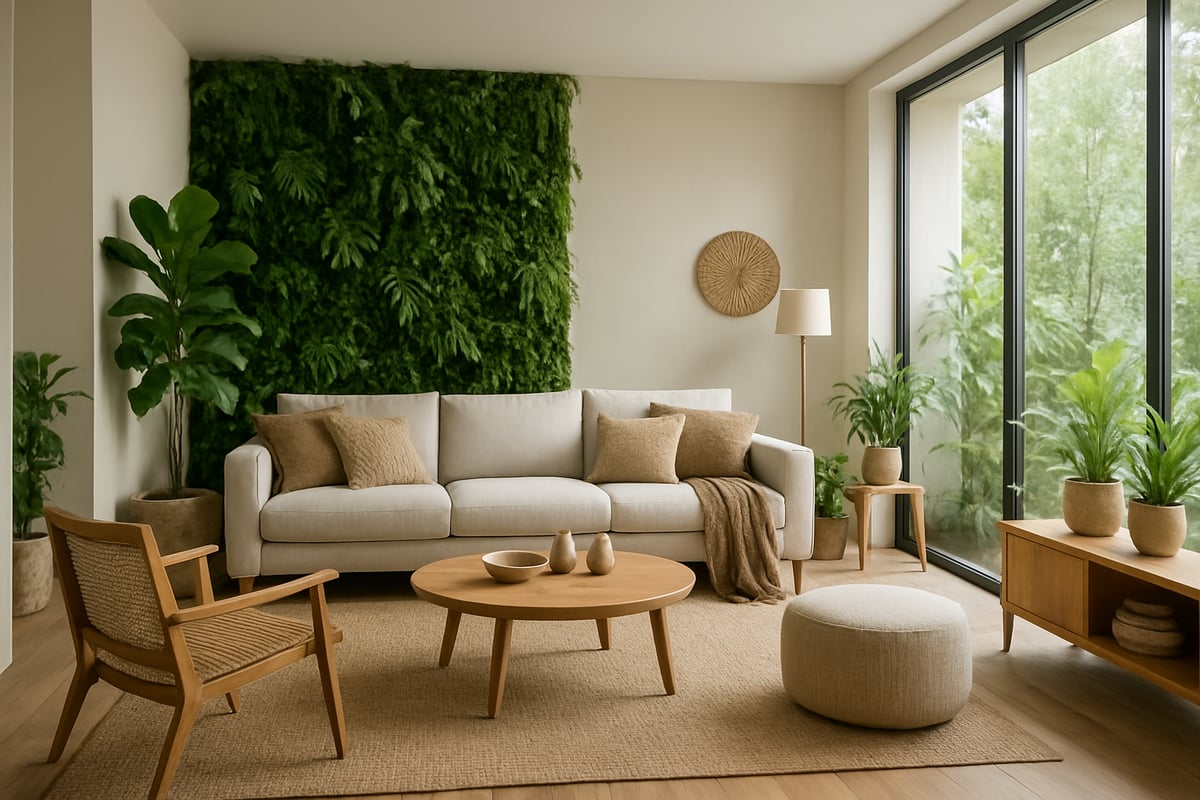
The Rise of Biophilic and Nature-Inspired Design
Biophilic design is taking center stage in house and interior trends for 2025. Homeowners are prioritizing natural materials such as wood, stone, and bamboo to foster a connection with the outdoors. Features like indoor gardens, living walls, and expansive greenery are becoming staples.
According to Houzz, 68 percent of homeowners now favor biophilic elements. Scandinavian minimalism, enhanced by organic accents, exemplifies this approach. If you are eager to incorporate nature into your space, explore the Biophilic Interior Collection for inspiration and curated options that align with this movement.
Bringing the outdoors inside not only elevates the mood but also promotes a healthier living environment, making biophilic design a cornerstone of house and interior innovation.
Color Palettes and Textures Defining 2025
Color is a powerful tool in house and interior design, and 2025 will see a focus on earthy tones, muted pastels, and bold accent walls. These hues create a calming backdrop that feels both modern and timeless.
Textures are layered thoughtfully, with linen, velvet, and sustainable composites adding depth and interest. Experts predict Pantone’s Color of the Year will influence many interiors, encouraging experimentation with both understated and statement shades.
Mixing soft textures and natural colors helps personalize each room, ensuring your house and interior reflect your unique taste while staying ahead of the curve.
Flexible, Multi-Functional Spaces
Adaptable spaces are becoming essential in house and interior planning. With shifting work patterns and growing wellness awareness, rooms now serve multiple purposes. Movable partitions, foldable furniture, and modular layouts are in high demand.
The National Association of Home Builders reports that 74 percent of new builds include flex spaces, underscoring this trend. For example, a guest bedroom might double as a home office or yoga studio.
Designing with flexibility in mind ensures your house and interior can evolve with your needs, maximizing both function and comfort.
Smart Minimalism and Clutter-Free Living
Smart minimalism is redefining house and interior aesthetics for 2025. The focus is on clean lines, hidden storage, and open layouts that promote serenity. Tech-driven organization solutions, like concealed charging stations and retractable shelves, keep spaces tidy and efficient.
This approach goes beyond traditional minimalism, integrating intelligent features that make daily life easier. For instance, hidden compartments can store electronics, while sleek cabinetry maintains a seamless look.
Embracing smart minimalism helps your house and interior remain inviting, organized, and ready for future technology upgrades.
Personalized, Tech-Enhanced Aesthetics
Personalization is key in house and interior design for 2025. Homeowners are investing in customizable lighting, digital art displays, and mood-setting technology to create truly unique spaces. Voice-activated ambiance controls allow for instant changes based on activity or mood.
Statista notes that 52 percent of homeowners plan to invest in smart decor this year. Imagine adjusting lighting scenes or displaying rotating digital artwork with a simple command.
By merging technology with aesthetics, your house and interior can reflect who you are and adapt to every occasion seamlessly.
Global Influences and Cultural Fusion
Global influences are enriching house and interior design, blending artisanal crafts with multicultural motifs. In 2025, expect to see a fusion of Eastern, Mediterranean, and Nordic elements that create eclectic yet harmonious environments.
A popular example is the boho-chic style complemented by Japanese wabi-sabi accents. This mix brings warmth, character, and a sense of travel into the home.
Incorporating global design ensures your house and interior remain vibrant, diverse, and reflective of a connected world.
Smart Home Technology: Integrating Innovation
The smart home revolution is transforming the house and interior experience, bringing convenience, efficiency, and personalization to daily living. As we approach 2025, integrating technology into every aspect of the home is no longer optional—it is essential for a modern lifestyle. The rapid growth of the smart home market, as highlighted in recent research, shows that homeowners are increasingly prioritizing innovation in their spaces.
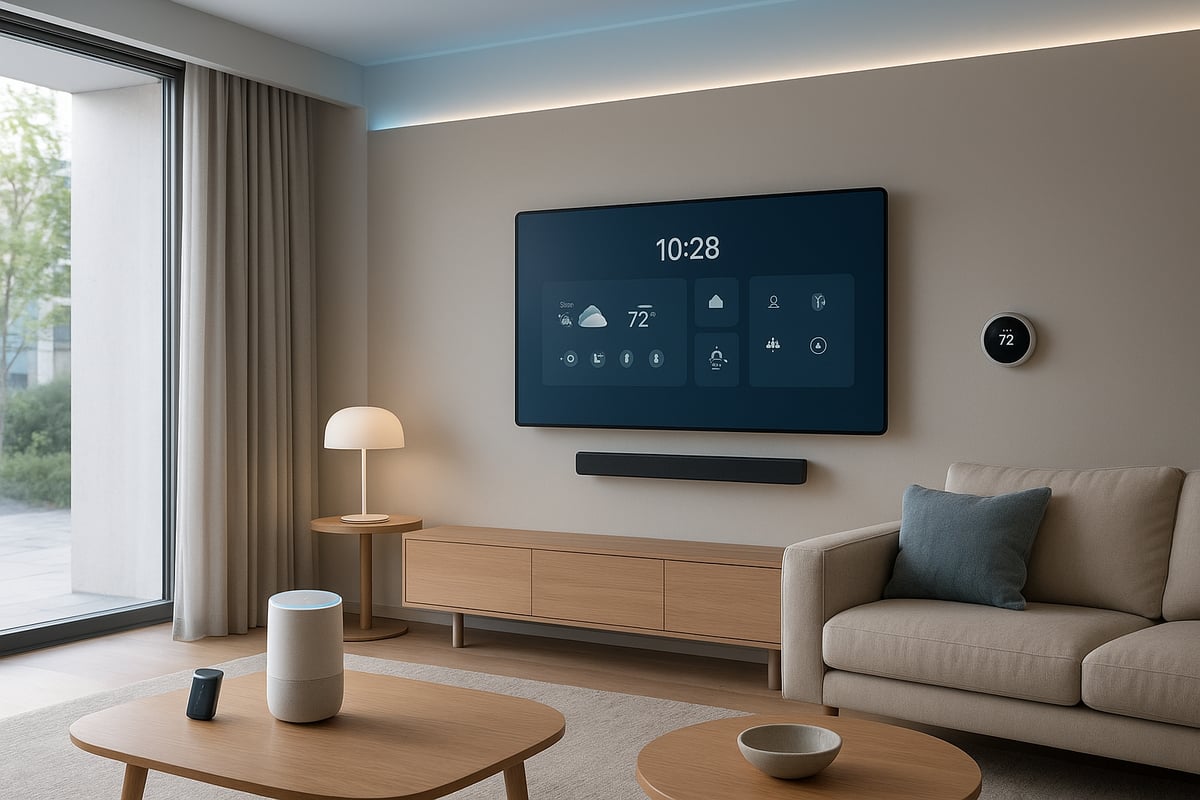
Home Automation Essentials for 2025
Centralized control hubs are at the core of the smart house and interior setup. These systems allow you to manage lighting, climate, and security from one device or app. AI-powered home assistants, like Google Home and Amazon Alexa, have become standard in new builds, letting you automate routines for maximum comfort.
Imagine waking up as your blinds open automatically, the thermostat adjusts to your preferred temperature, and lights gently illuminate your path. Integration rates for these systems are climbing as homeowners seek seamless connectivity.
- Centralized lighting and climate control
- Voice-activated assistants
- Automated daily routines
A unified platform simplifies the experience and ensures your house and interior are always in sync with your lifestyle.
Energy Efficiency & Sustainability Through Tech
Sustainability is a driving force in house and interior trends. Smart thermostats and solar panel integration help reduce energy costs while supporting eco-friendly goals. IoT-enabled appliances monitor and adjust energy use, providing real-time data for smarter decisions.
According to Energy.gov, 60% of new homes now include smart energy features. With automated systems, you can track consumption and receive alerts when it is time to adjust settings for optimal efficiency.
- Smart thermostats and solar integration
- Energy monitoring apps
- IoT appliances for reduced consumption
These advancements make it easier to align your house and interior with sustainable living objectives.
Wellness & Health-Focused Innovations
A future-ready house and interior go beyond convenience—they support physical and mental well-being. Air quality monitors and circadian lighting systems optimize your environment, while noise control tech ensures peaceful spaces.
Smart water filtration and purification systems are increasingly popular. Devices like Dyson air purifiers, which connect to apps, let you monitor and control air quality from anywhere.
- Air quality monitoring
- Circadian rhythm lighting
- Noise and water control tech
Incorporating these features creates a healthier, more balanced house and interior for all occupants.
Security and Privacy Upgrades
Security is a top priority for any modern house and interior. Facial recognition doorbells, encrypted smart locks, and advanced surveillance systems offer peace of mind. Privacy-first devices ensure personal data stays protected.
Statistics show that 42% of homeowners upgraded their security systems in 2023. With encrypted networks and regular software updates, you can safeguard your home against digital threats.
- Facial recognition entry systems
- Smart locks with encryption
- Comprehensive surveillance setups
A secure house and interior foster confidence and a sense of safety for your family.
Integrating Entertainment and Lifestyle Automation
Entertainment is being redefined by smart technology in the house and interior. Multi-room audio systems, immersive home theaters, and VR/AR spaces bring cinematic experiences to your living room. Automated shading and smart appliances create a tailored environment for any occasion.
Samsung SmartThings and similar platforms enable unified control of entertainment and lifestyle features, making it easy to customize your space.
- Multi-room audio and home theaters
- Automated shading
- Smart kitchen and lifestyle appliances
With these innovations, your house and interior become a hub of enjoyment, relaxation, and inspiration.
Sustainable and Eco-Friendly Living Choices
Sustainable living is no longer a trend but a necessity for every house and interior. As we approach 2025, homeowners are prioritizing eco-friendly practices that reduce environmental impact, promote wellbeing, and ensure long-term value. The journey to a greener home starts with thoughtful choices in materials, water, energy, waste, and air quality.
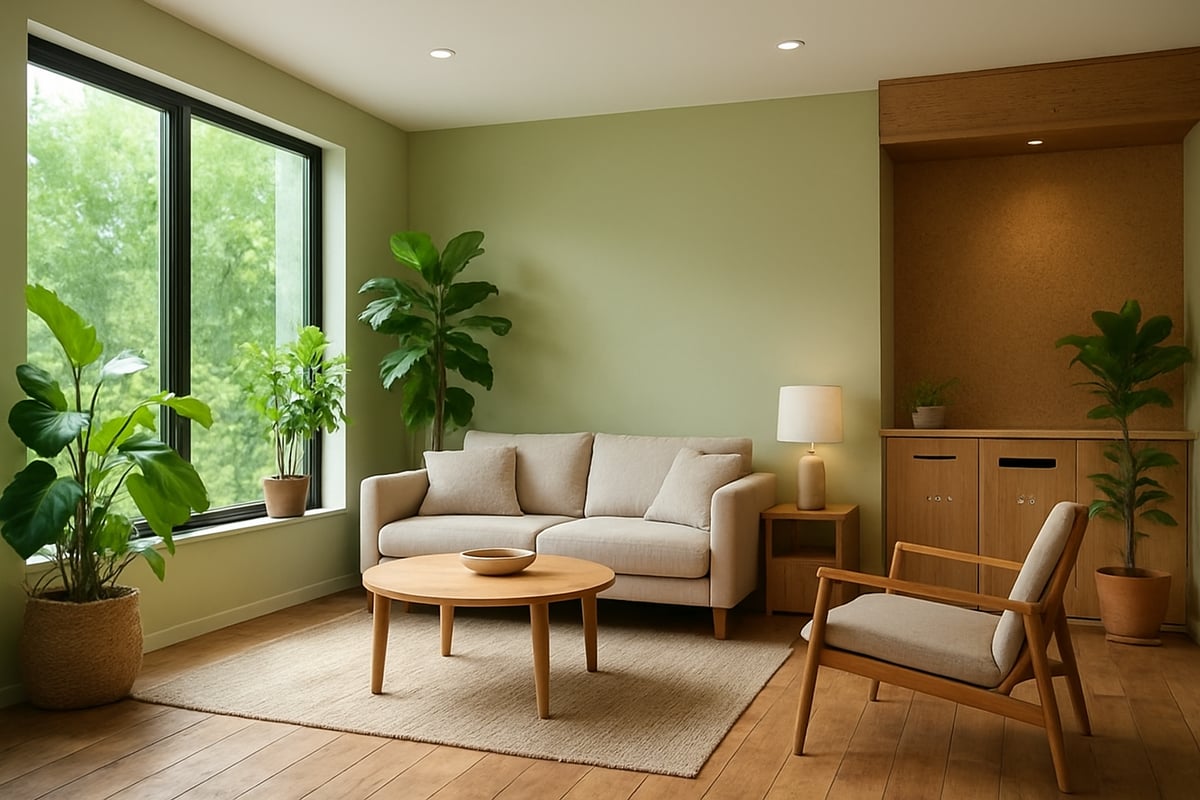
Green Building Materials & Certifications
Selecting sustainable materials is fundamental for an environmentally responsible house and interior. Homeowners are choosing recycled, reclaimed, and low-VOC options, such as cork flooring, bamboo cabinetry, and recycled glass countertops.
Certifications like LEED, WELL, and Passive House help ensure a building meets high standards for health and efficiency. For example, LEED focuses on energy and water savings, while WELL emphasizes occupant health. The Passive House standard pushes for ultra-low energy use.
Here’s a comparison of popular certifications:
| Certification | Focus | Key Benefits |
|---|---|---|
| LEED | Energy, water, waste | Lower bills, resale value |
| WELL | Health, comfort | Better air, wellbeing |
| Passive House | Energy efficiency | Minimal energy use |
Explore Sustainable Design and Materials for globally inspired and eco-friendly options that fit any house and interior style.
Water Conservation and Management
Water efficiency is essential for a future-ready house and interior. Smart irrigation systems, low-flow fixtures, and rainwater harvesting reduce waste and lower utility costs. According to the EPA, homes with smart water management save up to 20% in annual water use.
Practical solutions include:
- Smart leak detectors, such as Grohe Sense Guard
- Dual-flush toilets and low-flow showerheads
- Rain barrels and permeable landscaping
Integrating these features not only conserves resources but also supports a resilient house and interior for years to come.
Energy-Efficient Lighting and Appliances
Upgrading lighting and appliances is one of the most effective ways to boost sustainability in any house and interior. Advances in LED technology, solar-powered lighting, and Energy Star-rated appliances provide substantial energy savings.
Home automation systems can further optimize usage by scheduling lights and devices only when needed. In fact, 85% of remodels now include LED upgrades, reflecting the demand for efficient solutions.
Key benefits:
- Lower energy bills
- Reduced carbon footprint
- Increased comfort and convenience
Waste Reduction and Recycling Systems
A sustainable house and interior design plan incorporates waste management at its core. Built-in recycling centers, modular composting solutions, and upcycled décor are becoming standard in modern homes.
For example, zero-waste kitchens feature designated bins for recycling, compost, and trash, making it easy to sort waste at the source. Upcycled furniture and finishes add character while reducing landfill contributions.
Simple steps for waste reduction:
- Install under-sink recycling bins
- Choose products with minimal packaging
- Repurpose or donate old furnishings
Indoor Air Quality and Natural Ventilation
Good air quality is vital for a healthy house and interior. HEPA filtration systems, green walls, and effective cross-ventilation can dramatically improve indoor environments. Smart air quality sensors detect pollutants and prompt homeowners to take action.
The World Health Organization reports that improved air quality is linked to a 30% reduction in respiratory issues. Strategies include:
- Installing HEPA filters in HVAC systems
- Adding indoor plants for natural purification
- Designing windows for optimal airflow
Prioritizing air quality ensures that every house and interior supports the wellbeing of its occupants.
Space Optimization: Making Every Square Foot Count
Maximizing the functionality of every square foot is essential for a future-ready house and interior. As living spaces become more valuable, strategic design choices can transform even compact homes into comfortable, organized, and stylish environments.
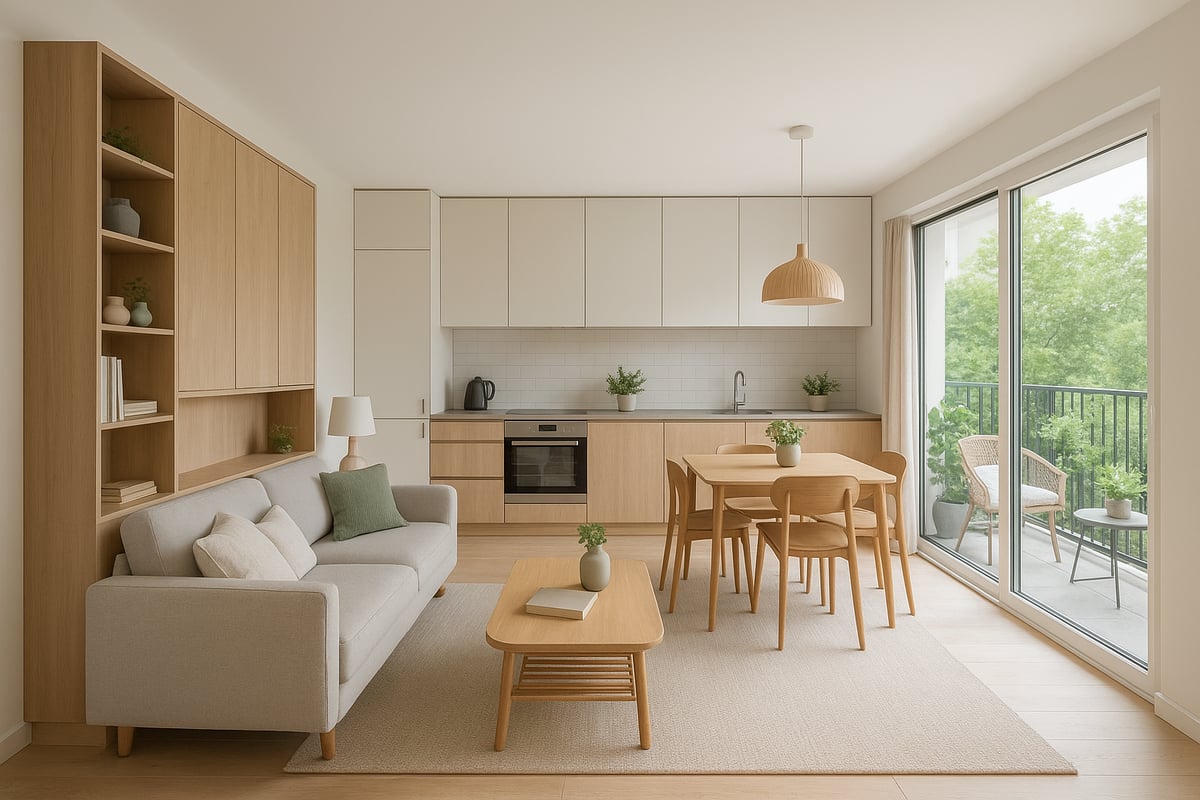
Open-Concept Living and Flow
Open-concept layouts remain a cornerstone of house and interior trends for 2025. Removing unnecessary walls allows rooms to flow effortlessly into one another, creating a sense of spaciousness even in modest square footage.
Natural light travels freely throughout these spaces, enhancing both comfort and energy efficiency. Sightlines are maximized so that every area feels connected and welcoming.
According to Zillow, 63% of buyers now prefer open layouts, making this approach valuable for both daily living and future resale. When planning your house and interior, consider how open flow can support flexibility and multifunctional use.
Storage Solutions for Modern Lifestyles
Effective storage is the backbone of any organized house and interior. Built-in cabinetry, under-stair compartments, and vertical shelving help keep clutter at bay without sacrificing style.
Smart closets with app-based inventory management are increasingly popular, allowing homeowners to track outfits and accessories with ease. Modular solutions, such as those found in Interior Cabinet Solutions, offer customizable storage to fit evolving needs.
This focus on tailored organization ensures every item has its place, supporting a clutter-free environment and enhancing the overall house and interior experience.
Small Space, Big Impact: Compact Living
The shift toward urban living and smaller homes is driving innovation in house and interior design. Convertible furniture, such as sofas that transform into beds or desks that fold away, are essential for maximizing utility in limited spaces.
Lofted beds create additional floor area for work or relaxation. Micro-apartments and tiny house solutions now feature smart layouts that maximize every inch.
Urban Land Institute reports an 18% increase in micro-living across major cities. By embracing these compact living strategies, your house and interior can feel spacious, functional, and inviting, regardless of square footage.
Outdoor Extensions and Functional Balconies
Outdoor spaces are becoming natural extensions of the house and interior, offering fresh air and additional living areas. Balconies, patios, and rooftops are transformed with weatherproof furniture, outdoor kitchens, and cozy seating arrangements.
Urban rooftop gardens bring greenery and tranquility to city dwellers. Functional balconies can serve as breakfast nooks, yoga corners, or mini gardens.
Integrating these outdoor elements enhances well-being and increases usable space, creating a seamless connection between the house and interior and the world outside.
Zoning for Privacy and Productivity
As remote work and hybrid lifestyles grow, zoning within open layouts is vital for privacy and productivity in house and interior settings. Acoustic panels help manage noise, while sliding doors and pocket offices carve out quiet spaces for focused tasks.
Distinct zones can be created through furniture placement, area rugs, or shelving units. Upwork notes that 48% of remote workers invest in home office upgrades, highlighting the importance of flexible layouts.
Thoughtful zoning ensures your house and interior adapts to changing needs, supporting both relaxation and efficiency.
Step-by-Step Blueprint: Planning and Executing Your 2025 Home Transformation
Transforming your house and interior for 2025 requires a clear, organized plan. By following a step-by-step blueprint, you can ensure your project aligns with future trends, personal needs, and smart investments. Here is your structured guide to success.
Assessing Your Needs and Setting a Vision
Begin every house and interior transformation by reflecting on your lifestyle. Consider who will live in the space, future family changes, and evolving work habits. Ask yourself what your must-haves are, such as a dedicated home office, flexible guest room, or aging-in-place features.
- Conduct a lifestyle audit for clarity.
- Identify core needs versus future aspirations.
- Visualize how your house and interior can adapt over time.
This foundational step ensures every decision supports your long-term vision. For added inspiration and actionable ideas, explore Home Decor Project Ideas 2025.
Budgeting and Timeline Management
A realistic budget is essential for any house and interior upgrade. Start by listing your priorities, then research current costs for materials, labor, and technology. Consider phased renovations if your vision exceeds your immediate budget.
- Set clear spending limits for each phase.
- Allocate extra funds for unexpected expenses.
- Establish a timeline with key milestones.
According to Houzz, the average home renovation budget increased by 12 percent in 2024, so plan accordingly. A well-structured budget and timeline keep your project on track from start to finish.
Choosing Design Styles and Materials
Your house and interior should reflect both personal taste and forward-looking trends. In 2025, sustainable, durable materials and a blend of modern with vintage pieces are key. Research eco-friendly options, and think about how textures, colors, and finishes can create a cohesive look.
- Opt for materials like bamboo, recycled glass, and responsibly sourced wood.
- Combine minimalist designs with statement accents.
- Sample color palettes before finalizing your choices.
Aligning design with function and sustainability ensures your house and interior remains timeless and resilient.
Integrating Smart Technology Seamlessly
Smart technology is a cornerstone of every modern house and interior. Plan for device compatibility, sensor placement, and future upgrades before construction begins. This prevents costly adjustments later.
- Map out wiring and device locations in advance.
- Choose systems that support centralized control.
- Work with certified installers to avoid technical pitfalls.
According to Consumer Reports, 70 percent of smart device failures result from poor planning. For deeper insights into smart energy management, review the IoT Energy Management Impact.
Collaborating with Professionals and DIY Options
Deciding when to hire experts versus taking a DIY approach is crucial for your house and interior project. Major structural changes or systems installations require licensed professionals, while accent walls or decor updates might be perfect for DIY.
- Consult architects for layout changes.
- Work with designers for aesthetic cohesion.
- Use online tutorials for smaller projects.
Balancing professional input and personal effort helps control costs and ensures high-quality results.
Monitoring Progress and Quality Control
Maintaining oversight is key to a successful house and interior transformation. Regular site visits, checklists, and digital project management tools support quality and efficiency.
- Schedule milestone reviews with your team.
- Use apps to track timelines and budgets.
- Document progress with photos and notes.
McKinsey reports that projects with digital oversight finish 15 percent faster. Continuous monitoring ensures your new house and interior meets all expectations.
Future-Proofing Your Investment: Trends That Will Last
When planning your house and interior for 2025 and beyond, it is essential to focus on trends that offer long-term value. Future-proofing means designing spaces that adapt, endure, and support evolving lifestyles. Let’s explore the key elements that will help your investment stand the test of time.
Timeless Design Principles for Longevity
Timeless design is at the heart of a house and interior that remains appealing for years. Neutral color palettes, classic materials such as hardwood and stone, and adaptable layouts create a foundation that never feels outdated. By avoiding overly trendy features for core elements, homeowners ensure easy updates with simple swaps like accent pillows or wall art.
Consider these enduring choices:
- Subway tiles for kitchens and baths
- Wide plank hardwood flooring
- Flexible open-concept layouts
A timeless house and interior not only looks sophisticated but also maintains market appeal, supporting your investment over time.
Adaptable Infrastructure for Evolving Tech
Technology is evolving rapidly, and your house and interior should be ready for what comes next. Modular wiring, upgradeable smart systems, and flexible layouts allow easy integration of new devices and features. Planning for electric vehicle chargers, solar connections, and smart hubs ensures your home infrastructure remains current.
A table comparing tech-readiness features:
| Feature | Benefit |
|---|---|
| Modular wiring | Easy upgrades |
| EV charger setup | Supports new tech |
| Smart home base | Centralized control |
With adaptable infrastructure, your house and interior can seamlessly adopt new innovations as they emerge.
Sustainable Value and Resale Considerations
Sustainability is more than a trend, it is a priority for long-term value in any house and interior. Features like solar panels, high-grade insulation, and smart energy systems not only reduce utility costs but also increase resale appeal. Green certifications can set your property apart in a competitive market.
According to recent studies, energy-efficient homes sell 10% faster, making sustainability a smart investment. For more ideas, explore Sustainable Outdoor Living Trends to see how eco-friendly choices can further boost value.
Wellness and Health-Driven Design
Prioritizing wellness in your house and interior has lasting benefits for both health and happiness. Spaces that maximize natural light, use ergonomic furniture, and feature soundproofing promote mental and physical well-being. Incorporating green walls, biophilic elements, and purified air systems enhances indoor environments.
Explore Biophilic Design Trends 2025 for inspiration on integrating nature and wellness into your design. Wellness-centric homes are linked to higher occupant satisfaction and overall quality of life.
Community and Connectivity
A future-ready house and interior should foster a sense of connection, both within the household and with the broader community. Designing for neighborhood integration, shared amenities, and digital connectivity encourages social interaction and support. Features like community gardens, co-housing layouts, or shared workspaces can add significant value.
Incorporating these elements ensures your house and interior is not just a private retreat but a hub for meaningful connections.
Anticipating Lifestyle Shifts and Demographics
As lifestyles evolve, your house and interior must be prepared for changes like multi-generational living, remote work, or pet-friendly spaces. Flexible designs that accommodate aging in place, new family members, or hybrid work needs are increasingly in demand.
For example, including adaptable rooms or planning for future renovations helps ensure your space meets tomorrow’s needs. By anticipating these shifts, your house and interior remains relevant and functional for years to come.
As we look ahead to 2025, creating a home that’s both beautiful and functional starts with building a solid design foundation. You’ve explored the latest trends, smart technology, and sustainable choices—all the essentials for a future-ready space. If you’re ready to put these ideas into practice, why not take the next step and build your expertise from the ground up? Whether you’re dreaming of a complete home transformation or just want to refine your eye for design, you can gain the skills and confidence to shape your ideal environment. Get started with Interior Design and make your vision for 2025 a reality.

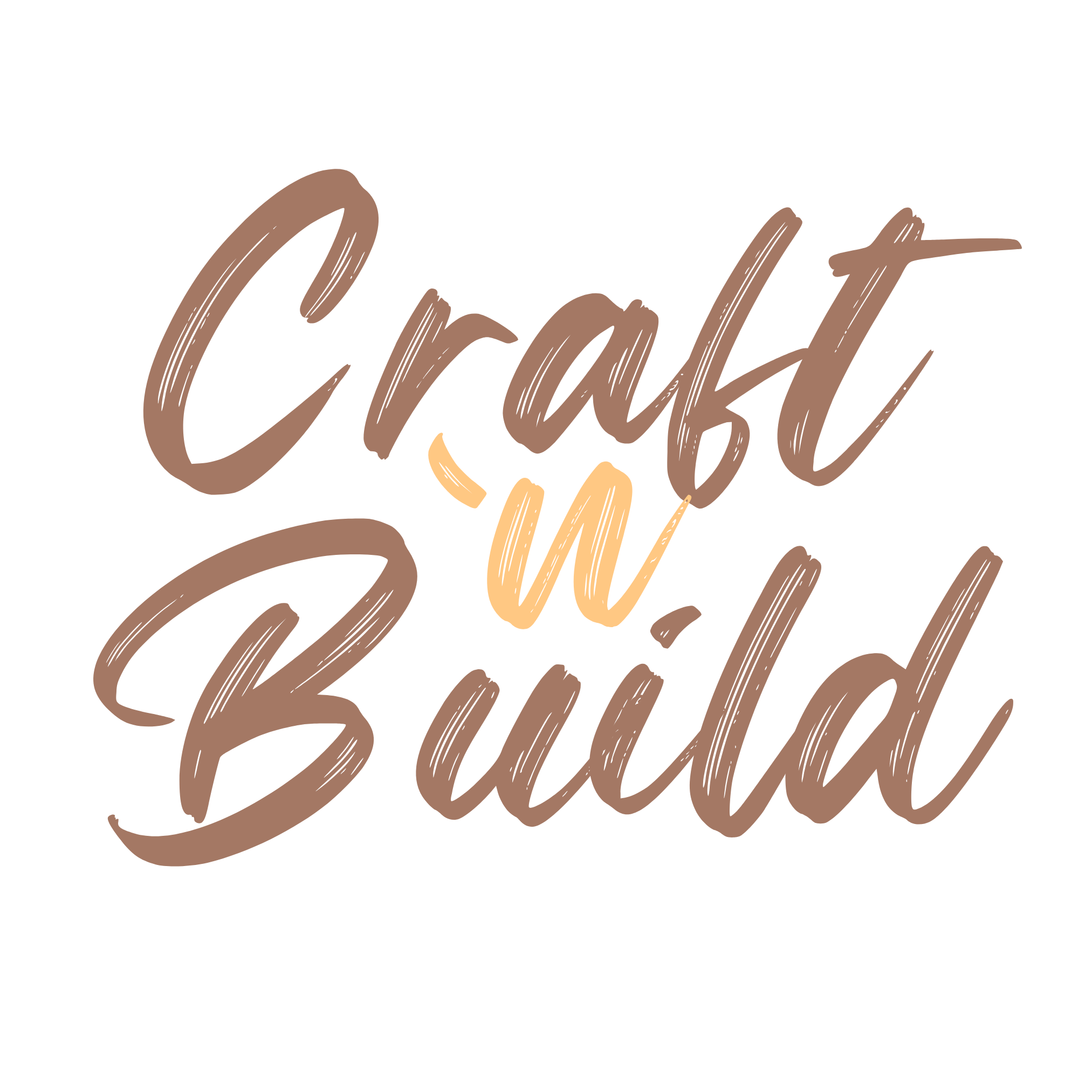

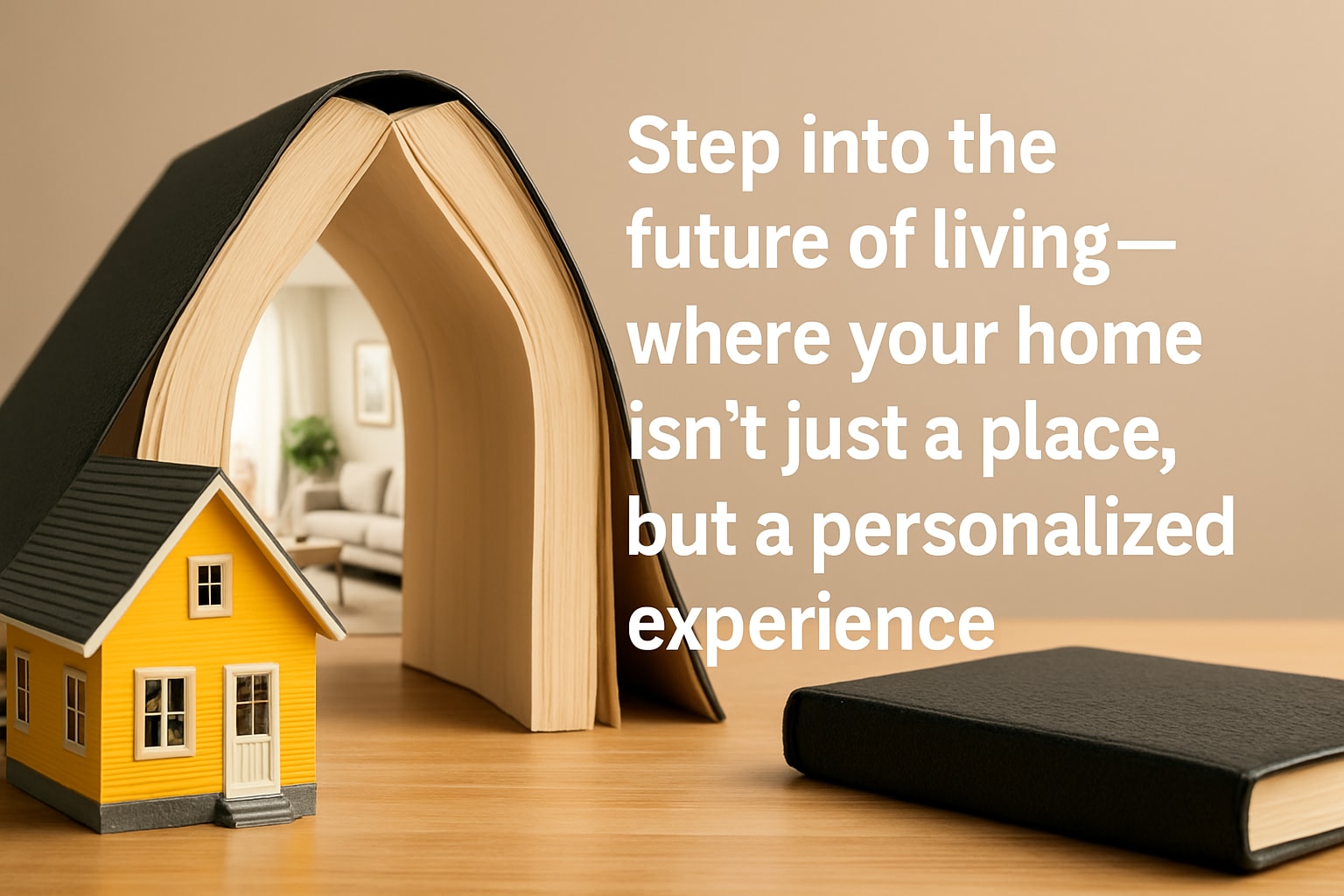


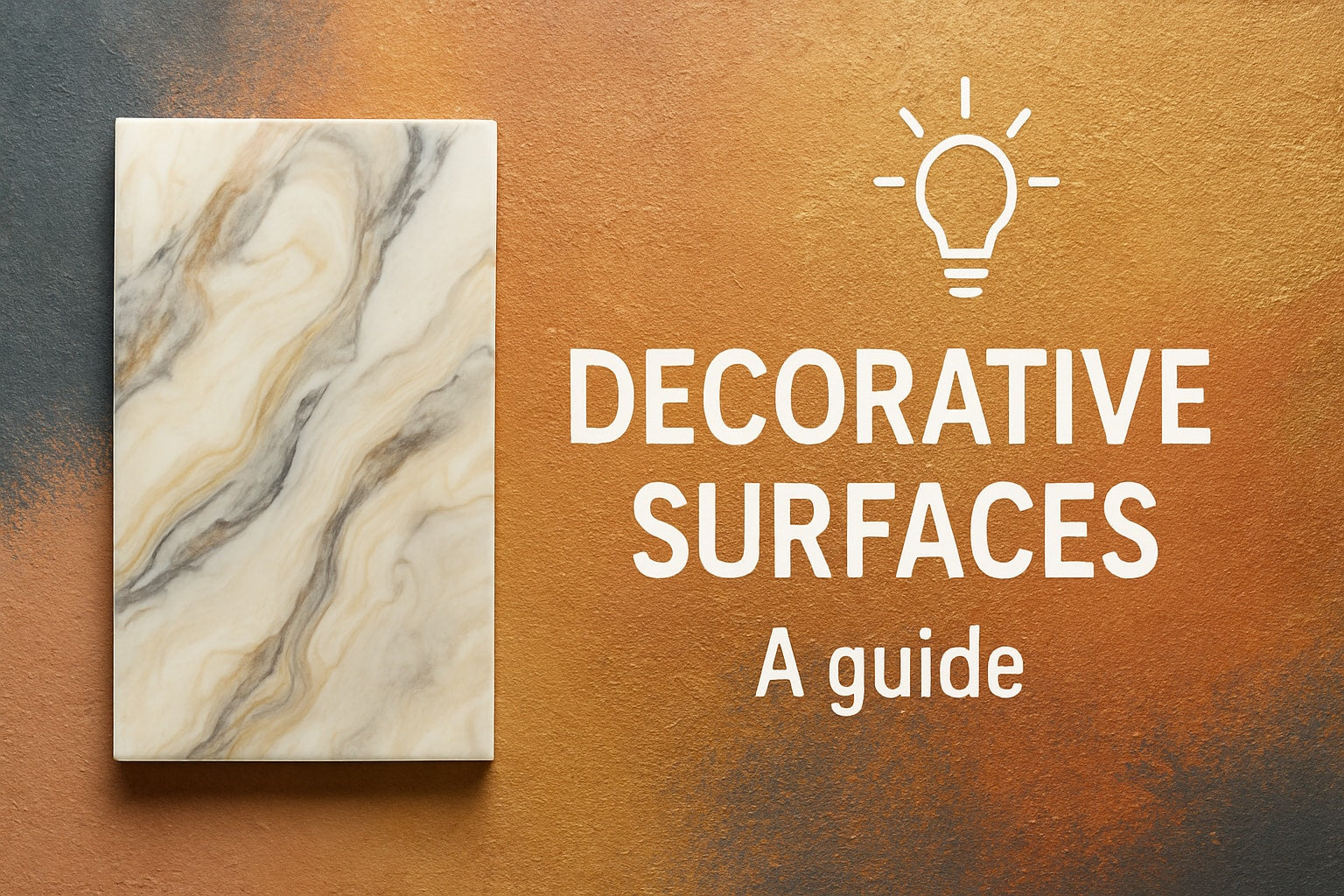
Share:
Great Interior Designs to Transform Your Space in 2025
Vintage Furniture Design Guide: Timeless Style Tips for 2025